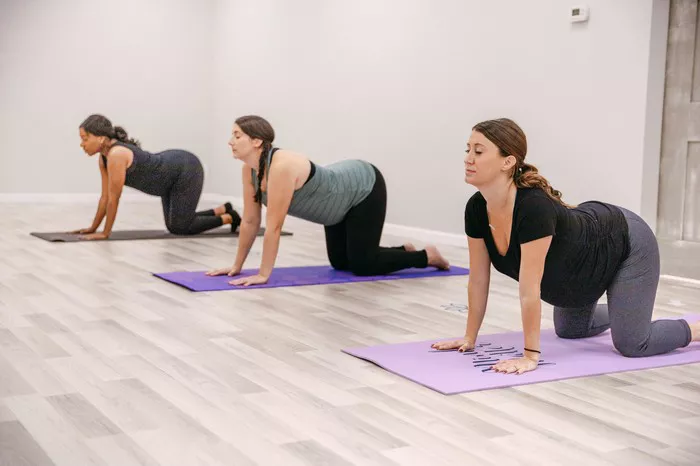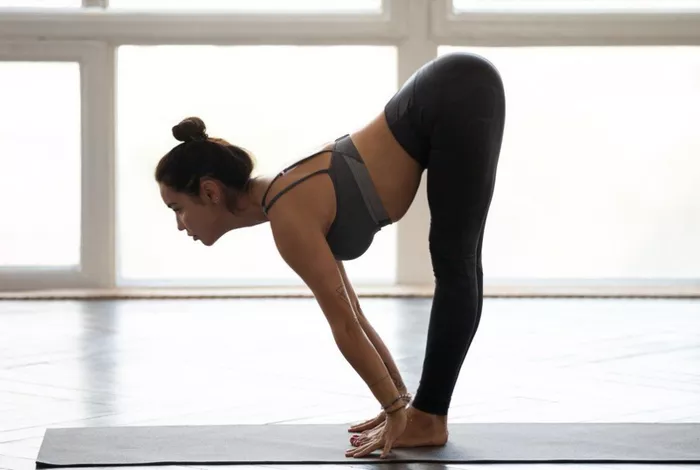Chair yoga is a gentle form of yoga that is practiced while sitting on a chair or using a chair for support during standing poses. This style of yoga makes the benefits of traditional yoga accessible to people who may have limited mobility, balance challenges, or other physical limitations. Over the past decade, it has gained popularity in senior centers, workplaces, and rehabilitation facilities due to its adaptability and health benefits.
Chair yoga includes stretches, strength-building postures, breathing exercises, and even meditation—all performed with the help of a chair. It maintains the essence of traditional yoga while eliminating the need to get down on the floor. This makes it an ideal option for older adults, individuals recovering from surgery, or those with chronic conditions such as arthritis or osteoporosis.
The Core Principles of Chair Yoga
Chair yoga adheres to the same foundational principles as traditional yoga: mindfulness, breath awareness, and body alignment. While it may appear simple, each movement is designed to enhance physical health and mental clarity.
Key Components Include:
- Postures (Asanas): Modified to be done seated or with chair support.
- Breathwork (Pranayama): Controlled breathing techniques to enhance relaxation and vitality.
- Meditation and Mindfulness: Techniques to improve focus and reduce stress.
- Relaxation: Guided relaxation methods to calm the nervous system.
These principles ensure that chair yoga is not only safe but also effective in promoting overall well-being.
Who Can Benefit from Chair Yoga?
Chair yoga is inclusive by nature, making it suitable for a broad range of individuals. Its accessibility is one of its greatest strengths.
Populations That Commonly Benefit:
- Seniors: It supports joint mobility, balance, and cognitive health.
- Individuals with Disabilities: Provides a safe environment for movement without strain.
- Office Workers: Offers a way to counteract the effects of prolonged sitting.
- Post-Surgical Patients: Assists in gentle recovery and range of motion.
- People with Chronic Conditions: Eases symptoms of diseases like diabetes, hypertension, and arthritis.
Because chair yoga can be customized, it meets people where they are in their fitness or wellness journey, which contributes to its effectiveness.
Health Benefits Supported by Research
While some may view chair yoga as too gentle to be impactful, scientific research suggests otherwise. Multiple studies confirm its efficacy in improving various aspects of physical and mental health.
Proven Benefits:
- Improved Flexibility and Range of Motion: Regular practice helps maintain and gradually improve joint movement.
- Enhanced Muscle Strength: Isometric exercises using body weight build strength without overexertion.
- Better Posture and Balance: By focusing on alignment, chair yoga reduces fall risk, particularly in older adults.
- Stress Reduction: Breathing and mindfulness techniques significantly lower cortisol levels.
- Mental Clarity and Mood Enhancement: Increased oxygenation and mindfulness help reduce anxiety and improve mood.
A 2017 study published in the Journal of Geriatric Physical Therapy found that seniors who practiced chair yoga twice a week for eight weeks experienced significant improvements in pain interference, balance, and fatigue.
Comparing Chair Yoga to Traditional Yoga
While traditional yoga often includes floor-based postures, inversions, and more intensive sequences, chair yoga modifies these elements for greater accessibility. The key differences lie in intensity and positioning, not in purpose or potential benefits.
Differences:
- Intensity: Traditional yoga may offer a more vigorous cardiovascular workout.
- Posture Range: Some poses are eliminated or heavily modified in chair yoga.
- Audience: Chair yoga is more inclusive, especially for those with physical constraints.
Despite the differences, chair yoga can deliver nearly the same benefits, particularly for those who cannot practice traditional yoga. What it may lack in intensity, it compensates for in consistency and accessibility.
Practical Tips for Starting Chair Yoga
If you are considering incorporating chair yoga into your wellness routine, it’s important to approach it thoughtfully. Even though it’s low-impact, it still requires attention to form and breathing.
How to Get Started:
- Choose the Right Chair: A sturdy, non-rolling chair without armrests is ideal.
- Find a Qualified Instructor: Look for those certified in chair yoga, especially if you have medical conditions.
- Start Slow: Begin with short sessions and increase duration gradually.
- Focus on Breathing: Breathwork enhances relaxation and body awareness.
- Listen to Your Body: Avoid pushing through pain; modifications are key.
Establishing a regular routine, even if it’s just 10-15 minutes a day, can lead to noticeable improvements in a short time.
Common Misconceptions About Chair Yoga
Several myths surround chair yoga, often undermining its credibility. Clearing up these misconceptions helps in appreciating its true value.
Misconceptions:
- “It’s Not Real Yoga”: Chair yoga maintains the same principles and goals as traditional yoga.
- “It’s Only for Seniors”: While ideal for older adults, it benefits anyone with limited mobility or a sedentary lifestyle.
- “It’s Too Easy to Be Effective”: The simplicity of the poses does not negate their impact on flexibility, strength, and stress reduction.
- “No Need for Guidance”: Just like traditional yoga, correct technique matters.
Recognizing and debunking these myths can lead to broader adoption and appreciation of chair yoga’s merits.
Expert Opinions on Chair Yoga
Healthcare and fitness professionals increasingly endorse chair yoga for its safety and effectiveness. Physicians, physical therapists, and yoga instructors often recommend it as a therapeutic modality.
What Experts Say:
- Physiotherapists: Support its use in rehabilitation, especially for joint replacement and chronic pain.
- Yoga Therapists: Advocate for its integrative benefits in mental health and mindfulness.
- Doctors: Recommend it as a low-risk, high-reward activity for seniors and individuals with chronic illnesses.
According to Dr. Patricia Bloom, a geriatric medicine specialist, “Chair yoga is one of the most accessible forms of exercise. It’s incredibly beneficial for those who need a gentle, yet effective movement routine.”
Creating a Home Practice
Chair yoga can be practiced at home with minimal equipment and space. This flexibility increases its appeal and accessibility.
Steps to Create a Home Routine:
- Set a Dedicated Space: Use a quiet, clutter-free area.
- Use Online Resources: Numerous free and paid tutorials are available.
- Keep Props Handy: Yoga straps, blocks, or cushions can help.
- Track Progress: Keep a journal to monitor changes in flexibility, mood, and energy.
- Stay Consistent: Even brief daily sessions yield cumulative benefits.
Over time, a home practice can become a cornerstone of one’s self-care regimen, providing daily moments of peace and vitality.
Chair Yoga in Group Settings
Group chair yoga classes offer the added benefits of community and motivation. These classes are often held in community centers, retirement homes, gyms, and even corporate offices.
Advantages of Group Practice:
- Social Connection: Enhances emotional well-being and combats loneliness.
- Accountability: Encourages regular attendance and effort.
- Guidance: Immediate feedback from instructors enhances safety.
Participating in a group setting can also provide emotional support and a sense of camaraderie, making the practice more enjoyable and sustainable.
Conclusion
Is Chair Yoga Really Effective? Yes, chair yoga is indeed effective. It offers a safe, adaptable, and holistic way to improve both physical and mental health. While it may not replace high-intensity workouts or advanced yoga for everyone, it fulfills a critical need for inclusive fitness and wellness practices. Whether you’re an older adult, a busy professional, or someone recovering from an injury, chair yoga can be a meaningful addition to your lifestyle.
By integrating breath, movement, and mindfulness, chair yoga proves that simplicity does not equal ineffectiveness. On the contrary, its gentle approach offers powerful benefits that are supported by research and endorsed by experts. With minimal equipment and maximum accessibility, chair yoga invites everyone to experience the transformative power of yoga—one seated pose at a time.
Related Topics:













